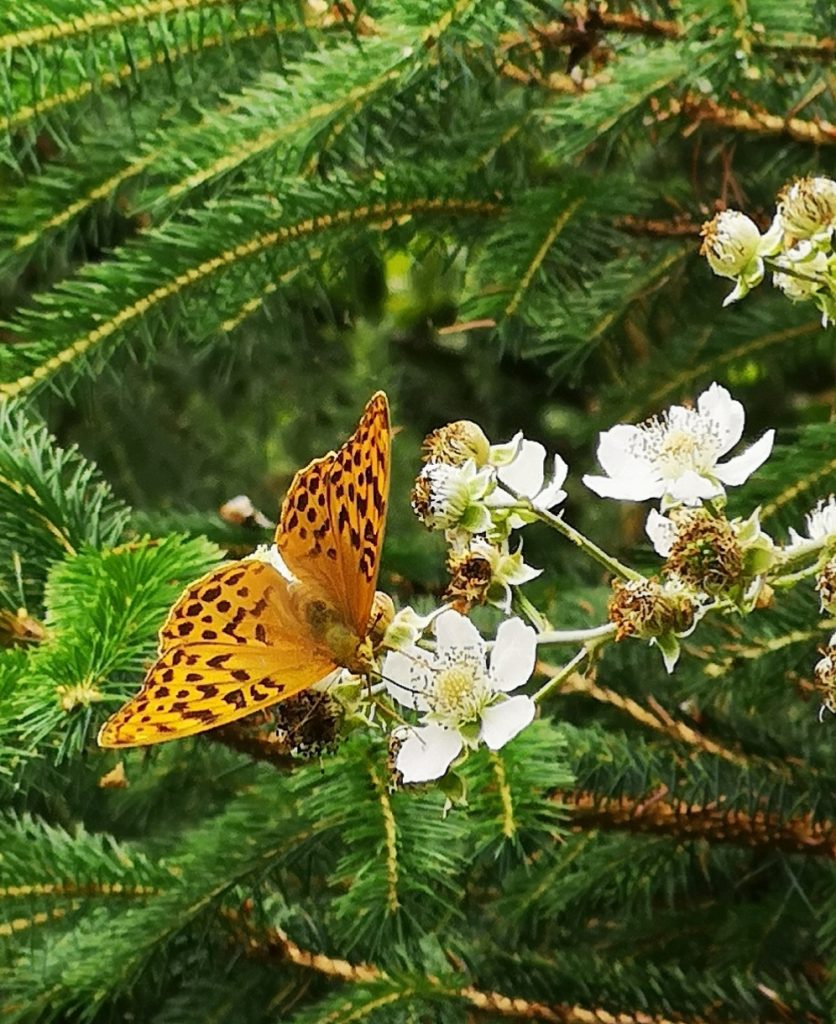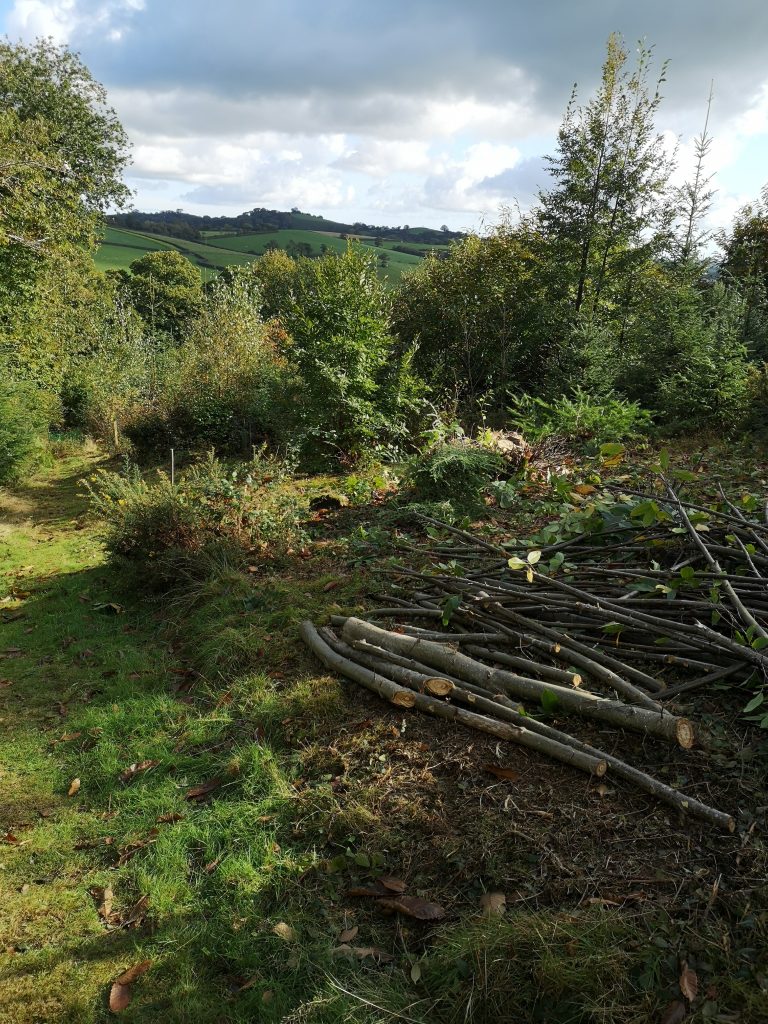Silver Washed Fritillary
Our species and plans (2)
Silver Washed Fritillary Argynnis paphia
STATUS: localised resident to Southern England, Wales and Ireland. GB Red list – least concern. Although its range has spread after a long period of decline, inoverall the population has not increased significantly.
HABITAT: generally a butterfly of broad leaved woodland, favours open sunny glades and rides. Somerset, Devon and Cornwall can be found in more sheltered woodland and lanes.
IDENTIFICATION : A large butterfly with a wingspan of up to 80mm. Striking golden brown wings with black markings. The butterfly gets its name from the silver washed lines on its underwing making it easy to identify from other species. The male has four thick line markings on each upper forewing, females do not have these.

BEHAVIOUR : A powerful and fast butterfly often seen high up in the woodland but will often come down to feed on nectar with bramble being a favourite. Very active on sunny days and not so on overcast days. Females will lay their eggs in sheltered shady areas of the woodland.
Food plant for the caterpillar are violets, especially Common Dog Violet.
HABITAT PLANS:
As with most woodland species of butterfly it is extremely important to have plenty of open rides and glades for them to forage and find mates.
This is a key area for us, the West to East ride is being widened by approx 20 feet. The picture below shows how wide the ride was with the grass area being its previous width, opening this up will be great for the butterflies, Bats and Nightjar.

Bramble is a major food source for the adult stage and this we have in plentiful amounts. The Common Dog Violets occupy the grass edges where these areas will be left unmanaged where possible.



